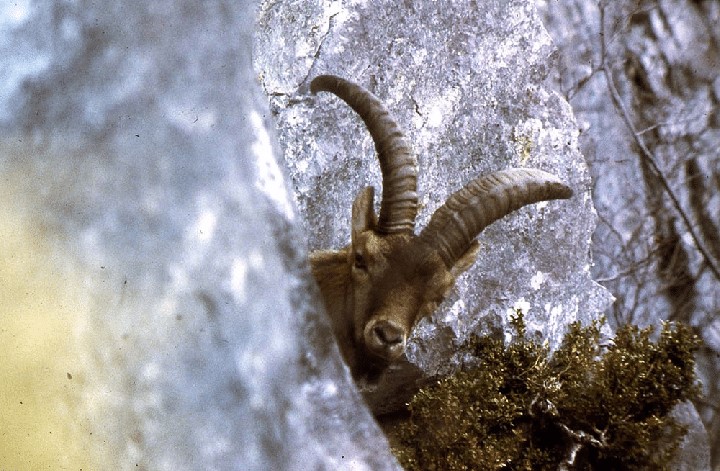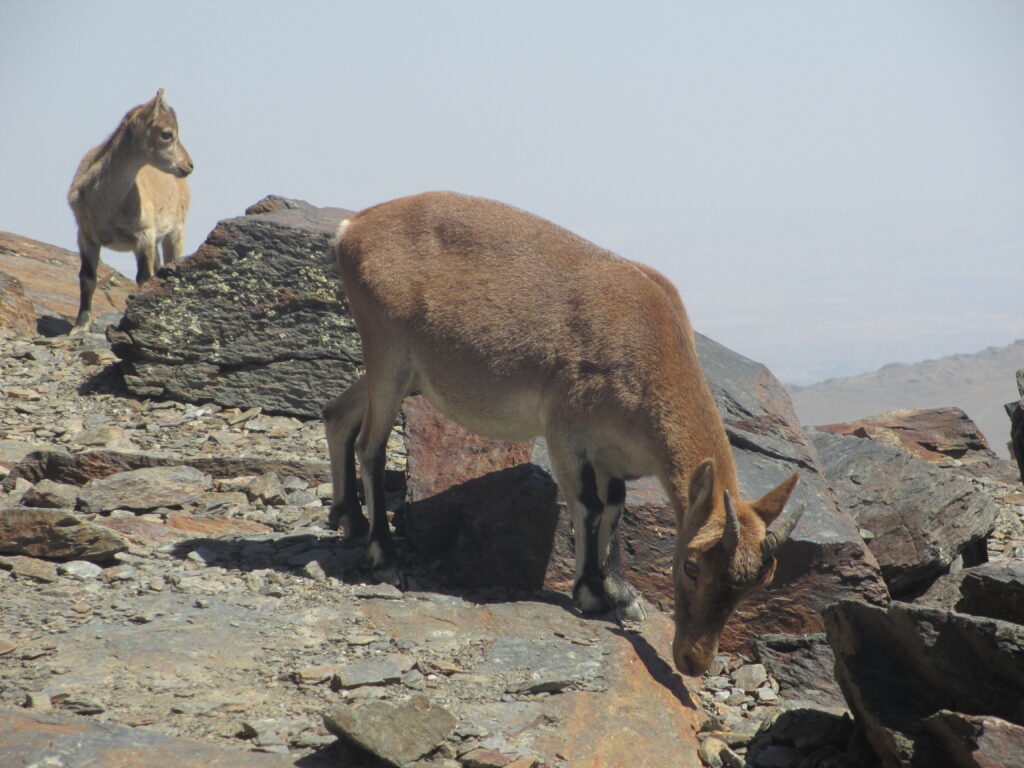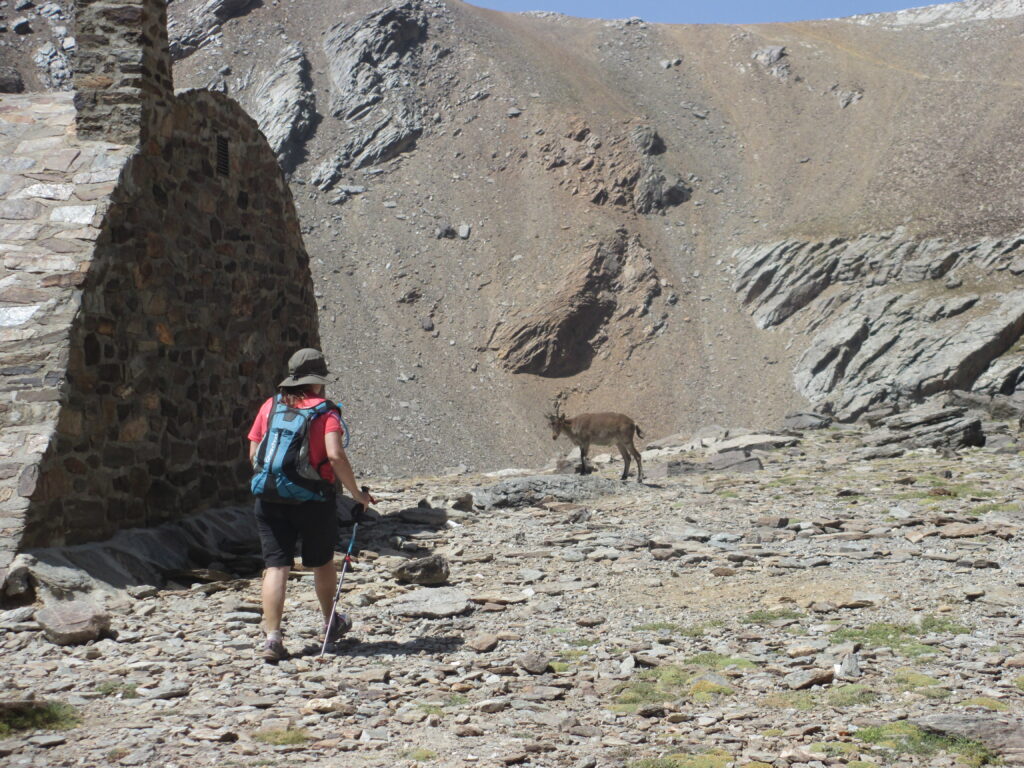The bucardo, the extinct mountain goat of the Pyrenees

In 2000, the last female of this subspecies of ibex, which had inhabited the Pyrenees since prehistoric times, was found lifeless. With longer and denser hair than its Iberian congeners, larger body size, thicker antlers at the base and larger size, it was unable to survive in this mountainous environment, neither inbreeding nor human pressure. Neither recovery plans nor attempts at "genetic resurrection" were successful. Let's get to know its history...
From cave paintings to extinction
During prehistoric times, the wild boar was widespread not only in the Pyrenees, but also in the surrounding valleys and plains. It had natural predators such as the cave leopard and, of course, our ancestors. Little by little, hunting pressure and the introduction of domestic goats relegated it to the more mountainous areas. At the beginning of the 19th century it was abundant in the Pyrenees, but hunting for its large antlers reduced the number of individuals. Around 1880, only one isolated population remained in Ordesa. In populations of few individuals, "genetic inbreeding" appears, i.e. the amplification of certain diseases that would be diluted in a larger population. In 1913, hunting was banned and the Ordesa Valley National Park was created as a protected area. In 1972, a population of less than 50 specimens was estimated, competing for space and vegetation with other ungulates in the area such as the mouflon or the bighorn sheep. In 1981, an alarming decline was noted and a few years later, in 1993, a recovery plan for the species began to be managed as part of a LIFE project. Three females were captured with the idea of crossing them with males of other subspecies of Iberian ibex, known as the hybridisation. The idea is to release the three females into the wild, together with reintroduced Iberian males. Two of the females die of old age, and the third one equipped with a radio transmitter is found dead after being hit by a fir branch. By the way, this specimen, called Celia, can be seen "naturalised" in the visitor centre of the municipality of Torla-Ordesa. In other Spanish and European museums we can see the remains of bucardos, such as antlers or other naturalised specimens.
But that's not the end of the story...
Attempts at genetic cloning
Michael Crichton in 1990 writes the novel Jurassic Park, the story is about "resurrecting" extinct dinosaurs from the blood cells of these reptiles. These cells would be in the digestive tract of fossil parasitic insects trapped in amber. This technique is called genetic cloning And not all of this story is "novel". After many unsuccessful attempts, science managed to clone the famous Dolly the sheep in 1996. The same thing was tried with the common whelk. Before our "Celia" was released, tissue samples were taken for freezing. In 2003, the CITA (Centro de investigación y Tecnología Agroalimentaria de Aragón) carried out a cloning project. What did it consist of? Celia's genetic material (DNA) was extracted from the frozen cells. Simultaneously, domestic goat eggs had their genetic material extracted and replaced with Celia's DNA. This egg with Celia's genetic information was introduced into the uterus of a female hybrid between domestic goat and ibex from the population of the Tortosa-Besseit ports. To get an idea, about 350 embryos were implanted in almost 60 goats. Only 7 goats became pregnant and only one female gestated correctly. She gave birth to a kid, genetically identical to Celia, but died a few minutes later due to respiratory problems. It is possible that these pathologies are due to inbreeding.

Science only has the genetic material of one female, old, sterile, with high inbreeding and cardiopathies revealed in the autopsy. It would be possible to try to recover genetic material from a specimen preserved in museums. But, the controversy is served, is it worth investing time and money in "resuscitating" this subspecies of ibex, or perhaps continue with the reintroduction of the Hispanic subspecies, as was done in 2014 in the Pyrenees? This without taking into account the overpopulation we have of mouflon or fallow deer in this area and the consequent competition it could have with the "cloned bucardo".
What about the other subspecies of Iberian ibex?
We have already heard the story of the Pyrenean subspecies, the bucardo. Another subspecies, the Lusitanian, followed the same fate. In 1890 it became extinct in Galicia and in 1892 in Portugal. Currently, there are two subspecies that populate the peninsula, the Gredos ibex and the Hispanic ibex. The former is found in the central area of the peninsula and the latter in the Mediterranean area.

The estimated population of these two subspecies is around 50,000 specimens, distributed in more than 27 nuclei. There are 16,000 specimens in Sierra Nevada, 8,000 in Gredos, 7,000 in Maestrazgo, 4,000 in the sierras of Grazalema and Ronda and 2,000 in Sierra Morena. Not all of them are large populations; some specimens have been transported from nearby populations and have adapted to new territories. This is the case of the almost 250 specimens that populate the mountain of Montserrat, brought in the 1990s from the massif of the "Ports de Tortosa-Besseit" and perfectly adapted to the natural space.

Ecology and habits of the ibex
Their habitat is the mountains, where they can be found in areas with steep slopes and high altitudes. They are social animals and during most of the year we can find the males on one side and the females and their young on the other. In summer they are usually found at higher altitudes where there is more vegetation and in winter the snow pushes them into the valleys. In November they enter their rutting season. The males fight each other for hierarchy in the social group and for their harem of females. The winning male walks with his head stretched forward and releases the pheromones of sexual attraction through his anal gland. These chemicals induce ovulation in the females. The male detects suitable females by the smell of their urine and knows if they are receptive for mating. When spring arrives, the female gives birth to a kid that will remain in the female group. Their diet is herbivorous and varied depending on the seasonal resource. They eat fresh grasses, shrubs such as rosemary or juniper, pine or holm oak leaves.

Fastpacking is not about going faster. It's about going lighter.
If you come from classic trekking, this is the next step: learning to move with less weight,
more fluid and enjoying every kilometre more.
Join the channel and start discovering what lightness feels like.
